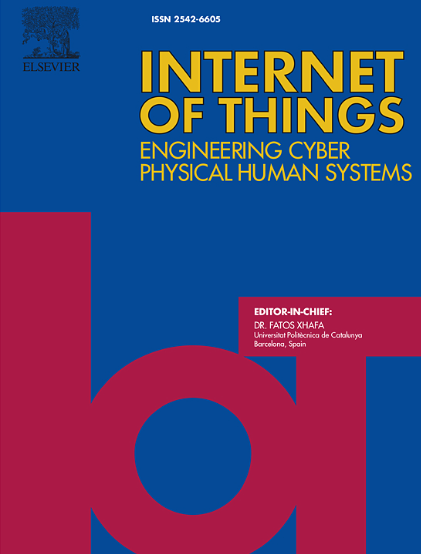一种面向边缘设备的虚拟到真实的知识转移与自适应方法
IF 6
3区 计算机科学
Q1 COMPUTER SCIENCE, INFORMATION SYSTEMS
引用次数: 0
摘要
在边缘设备上启用机器学习功能对于支持多种自动化场景至关重要。考虑到现实世界数据的低可用性,虚拟到真实的知识转移方法通常用于训练机器学习模型,以便部署在现实世界的边缘设备上。然而,虚拟数据和真实数据之间的差异阻碍了模型部署后的性能。虽然基于域适应的方法允许模型学习虚拟世界和现实世界共享的特征,但生成的模型是静态的,而且太大,无法与边缘设备结合使用。TinyML允许在资源受限的设备上使用机器学习模型,将模型压缩到小的可传输文件中。然而,大多数现有的TinyML舰载操作被限制到绘制推断并且不便于舰载训练。为了应对这些挑战,我们提出了GADANN,这是一种基于tinyml的虚拟到真实的知识转移方法,有助于机载适应。GADANN通过利用深度神经网络,域适应,TinyML和遗传算法扩展边缘设备上的机器学习。该方法已经在现实环境中进行了成功的测试,通过将其部署在仓库原型中的真实机器人上,使用计算机视觉识别托盘。GADANN可以通过实时适应环境来提高机器人的精度。本文章由计算机程序翻译,如有差异,请以英文原文为准。

GADANN: A Virtual-to-Real knowledge transfer and adaptation method for edge devices
Enabling Machine Learning capabilities on edge devices is crucial for supporting several automation scenarios. Given the low availability of real-world data for training, Virtual-to-Real knowledge transfer methods are often utilised for training Machine Learning models for deployment on edge devices located in the real world. However, the difference between the virtual and the real-world data hampers the post-deployment performance of the model. While Domain Adaptation-based methods allow a model to learn features shared across the virtual and the real worlds, the resulting model is static and too big to be used in conjunction with an edge device. TinyML allows the usage of Machine Learning models on resource-constrained devices by compressing the models into small transferable files. However, most of the existing TinyML onboard operations are restricted to drawing inferences and do not facilitate onboard training. To tackle these challenges, we propose , a TinyML-based Virtual-to-Real knowledge transfer method that facilitates onboard adaptation. extends Machine Learning onboard the edge devices by leveraging Deep Neural Networks, Domain Adaptation, TinyML and Genetic Algorithms. The method has been tested successfully in a real-world setting by deploying it on a real robot in a warehouse prototype to identify pallets using computer vision. can boost the accuracy of the robot by adapting to the environment in real-time.
求助全文
通过发布文献求助,成功后即可免费获取论文全文。
去求助
来源期刊

Internet of Things
Multiple-
CiteScore
3.60
自引率
5.10%
发文量
115
审稿时长
37 days
期刊介绍:
Internet of Things; Engineering Cyber Physical Human Systems is a comprehensive journal encouraging cross collaboration between researchers, engineers and practitioners in the field of IoT & Cyber Physical Human Systems. The journal offers a unique platform to exchange scientific information on the entire breadth of technology, science, and societal applications of the IoT.
The journal will place a high priority on timely publication, and provide a home for high quality.
Furthermore, IOT is interested in publishing topical Special Issues on any aspect of IOT.
 求助内容:
求助内容: 应助结果提醒方式:
应助结果提醒方式:


